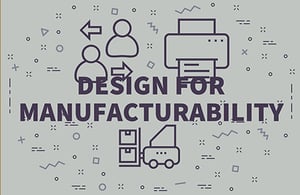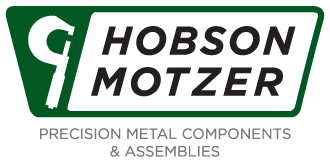Planning for a Successful DFM Partnership
Design for Manufacturability (DFM) involves designing parts or products so that they meet the critical needs of an application while simultaneously being designed for optimal, efficient, and cost-effective manufacturing.
It is the Holy Grail of design in the world of high-precision metal parts and components for any industry that needs them. Creating an optimal design requires an understanding of the many variables that can go into its manufacture. Design engineers have a solid knowledge of all manufacturing methods, but most still see the value of a DFM exchange with manufacturers. It can be worth its weight in gold if it creates an opportunity to reduce the timeframe from concept to part—which will increase speed to market. It can also reduce manufacturing costs and improve function, performance, durability, and more.
Rightly so, a design engineer’s primary focus is on the development of a product and the individual components it is comprised of. Each component’s fit, form, and function are considered relative to how they will interact with each other in the overall framework of the product that is being brought to life. When these minds meet, and the perspective of the manufacturer is considered, it provides a view from an entirely different angle: how to best manufacture this part?
It challenges the design from the maker’s perspective, which can be anything from the intended method of manufacture, to certain tolerance requirements—and how to achieve them—to the chosen grade of material. The process can find opportunities that emanate from what would be our primary focus: the manufacturing process.
In our area of expertise, precision metal stamping and CNC machining, these are processes that can provide economical and quality options for high-volume production for a variety of parts and components for a range of industries and applications. It’s important, as you plan your design, to designate the qualities you require in your finished part, including (but not limited to):
- Material grade
- Strength and durability
- Edge conditions & corner radiuses
- Corrosion resistance
- Conductivity properties
- Plating requirements
- Marking/identification
- Finishing/secondary operation needs
- Component assemblies (i.e. laser cutting/welding)
Early in the Process
A DFM exchange that occurs at the earliest phase in the process can steer an initial design in the right  direction—right from the start—and is a best practice. The process should include all stakeholders and present a broad overview of a project, key performance expectations, and any mating components that form an assembly. This process is important and allows potential problems to be identified and addressed during the design phase, saving time, money, and wasted resources in the long run. It is important to work closely early in the design process to:
direction—right from the start—and is a best practice. The process should include all stakeholders and present a broad overview of a project, key performance expectations, and any mating components that form an assembly. This process is important and allows potential problems to be identified and addressed during the design phase, saving time, money, and wasted resources in the long run. It is important to work closely early in the design process to:
- Understand what technology is available to meet critical tolerances and increase overall productivity
- Define requirements for prototypes
- Produce consistent, high-quality components
- Gain efficiencies
- Develop scalable production methods to support high volumes
Design for manufacturability will increase the quality of a product from beginning to end. The end result produces high-quality parts, increases your return on investment, and integrates manufacturing processes from end to end.
Hobson & Motzer has been working with companies to produce innovative solutions since 1912. Our DFM Guide discusses the factors you need to consider—and what we evaluate—when designing your part for manufacturability. Establishing these requirements at the onset of your project will promote a successful collaboration of your project. Request a copy of the DFM Guide now to get started on your next DFM project.










